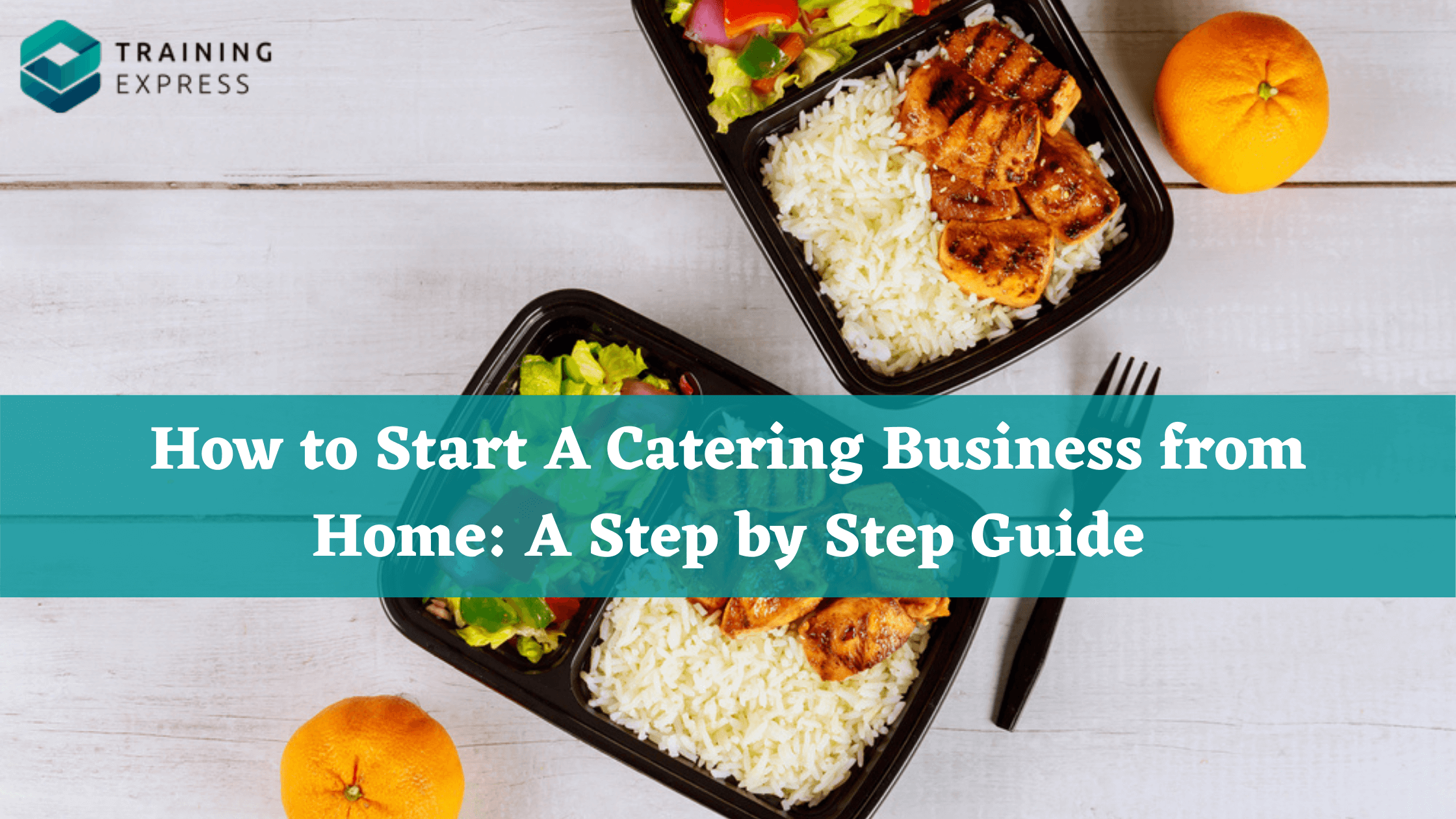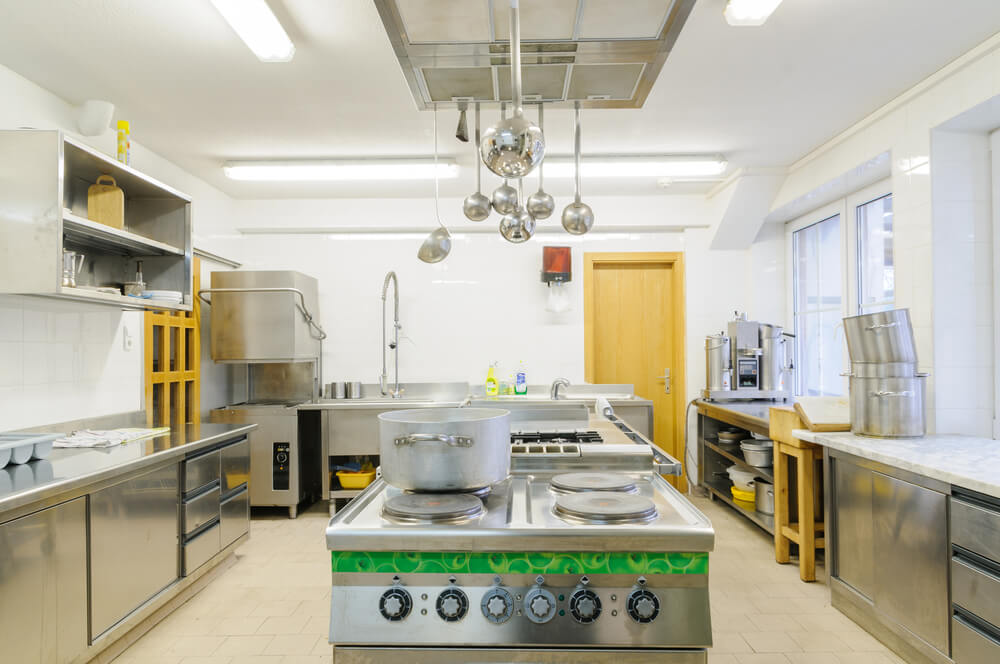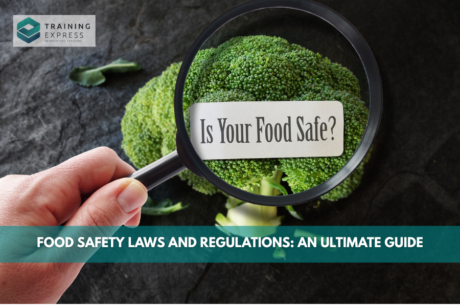

Catering business from home has become a popular start-up idea these days. A home-based catering business doesn’t require that much investment like a restaurant. That’s why it’s becoming popular among entrepreneurs who are looking for a cost-effective and low investment option to start their business.
The food industry is the largest manufacturing sector in the UK, which is worth £28.2 billion per year. The catering industry is a specific part of this huge market and its contribution was £4.7 billion in 2017 which was expected to exceed £5 billion in 2023. This statistics exhibits how lucrative the catering market is to make a start-up in this industry.
If you excel the cooking skills and love to make delicious food for others, starting your own catering business from home could be a good business idea for you. All you need with this is just an entrepreneurial spirit and a complete guideline to kickstart your catering business. In this article, I’m going to walk you through a step by step guide so that you can make your way into the catering industry and start your business from home. Now let’s dive right in.
10 Steps to Start A Catering Business From Home
Every business needs a proper strategy and a concrete business plan to succeed. A catering business isn’t an exception to this. You need to follow the right course of action to start your business. Here are the ten steps for you.
Step 1: Conduct your market research
Market research is an integral part of a business plan and you need to do this before launching your venture. You have to conduct thorough market research to set up your strategies to get into the market and sustain your business. So, before starting your catering business from home, understand the market trend and demand for catering service in your area. Also, find out the competitors in your area. Study them thoroughly and find out their strengths and weaknesses. Then plan for exceeding their strengths and avoiding their weaknesses to make a foolproof business plan.
You can study your competitors in many ways. Check out their menus, their foods and services, pricing and what type of customers they’re serving. You can take their services to understand the things on your own rather than only relying on information from other sources. Also, follow social media and forums where people gossip about foods. You’ll gain an insight into the customer’s needs and desires in such ways After doing so, document all your findings and analyze the pros and cons of your catering business from home and proceed further.
Step 2: Identify your target customers
Once you’re done with your market research, the next step is to identify and map your potential customers. The catering market is broad and has different types of customers. They have different needs and demands from the catering business. You need to understand their demands and determine who you can serve the best and meet all their needs. It’s not unusual that everyone won’t be your customers and you can’t meet everyone’s demands. Therefore, you should find your target customers and set your business plan surrounding them.
Step 3: Choose your niche

It is important to determine the niche for your home-based catering business. There are several niches in the catering business and it is wise to work in a specific niche. You can’t cover all the niche as a start-up and it wouldn’t be a good idea to work in multiple niches at the beginning of your business unless you have the capacity to do this. So measure your capacity and choose the right niche for your business. You can choose anyone according to your capacity, which includes:
- Wedding parties
- Birthday parties and Anniversaries
- Corporate events
- Picnics
- Holiday events
- Festivals and Sports
- Regular lunch meals to corporate offices and workplaces.
These are the broader niches you can work in as a small caterer. However, you can further narrow down your services within your niche. For example, if you’re good at cake baking and decoration, you can limit your service to only preparing and supplying amazing cakes for birthday parties and anniversaries, rather than taking the charge of supplying all the foods for the events. It’s always better to master one thing rather than working with multiple things. It helps you make a brand of your own.
Step 4: Name your business
The next step is naming your catering business. A business must have a name so people can recognize it. The name is the most vital element for creating a brand. Because people will know about your business and call it by its name. No matter you’re going to operate your catering business from home, it must have a name. It is important not only for branding but also for meeting the legal obligations. So, choose a nice and relevant name for your business.
While naming your business, keep it short and engaging. Try to give a name within one word so people can call and remember it easily. Choose an exceptional name and never choose a name that is taken by another business.
Step 5: Get your food safety qualifications
No matter how skilled you’re in cooking, you need to have certain qualifications to sell food publicly in the UK. It’s a legal and moral obligation to serve foods that are safe to consume. So, the law requires you to have a clear understanding of food hygiene and safety procedures, and HACCP principles. Also, you and your staff need to have Level 2 food safety qualifications to meet legal obligations for the catering business.
Food safety qualifications aren’t only required for meeting the legislation. They help you understand the importance of food safety and implement a plan to prepare and serve safe foods to your customers. This is important for your brand value and becoming successful in the food industry.
Step 6: Set up your kitchen

Though you’re going to start a catering business from home, you need to set up a dedicated kitchen for it. Because catering services require industrial equipment which is more complex and expensive than those for a regular home kitchen. You’ll be preparing a way more amount of food than your family needs. So, you’ll need a kitchen large enough to accommodate all the equipment and kitchen appliances. You can modify your home kitchen if it is large enough or set up a new kitchen within your home or premises.
You have to ensure the following equipment and appliances in your kitchen:
- Crockery materials
- Fryers, burners and stoves
- Baking ovens
- Storage cabinets
- Freezer and refrigerator
- Stainless steel prep tables
- Sinks and basins
- Garbage bins
- Blenders and juicers for beverage, etc.
Keep in mind the following things while setting up your kitchen for the catering business:
- If you have many items to bake, consider installing at least two ovens for making your foods efficiently and curtail the time for cooking.
- Install more than one fryer if you have a lot of fried items to serve.
- Ensure food hygiene and safety best practices during the whole process of preparing and serving foods.
- Focus on food storage for food hygiene and safety. If possible, use separate refrigerators for storing raw foods and prepared foods. If not possible, store the raw foods at the bottom shelf of the fridge to avoid spillage and dripping.
- Ensure the supply of water, gas and electricity in your kitchen and set up a fire safety plan for emergencies.
- Install proper waste disposal and management systems within your kitchen.
Step 7: Get your licenses and permits
Step 8: Create your menu and set prices
Once you’re done with your licenses and permits, you’re almost set to launch your catering business from home. But you have to create your menu and set your prices before opening your business. So, create a menu covering the in-demand foods within your niche. It would be better if you could introduce a signature item of yours on the menu. This will help you in branding and boost your business if your customer loves the item.
Apart from creating the menu, focus on competitive pricing for your foods. Know your competitors and their pricing and set your prices according to the market trend.
Step 9: Decide your delivery system

Since you’re going to run a home-based catering business, you have to deliver your food to the customers. So, decide the system of food delivery before launching your business. As a start-up, it wouldn’t be possible to hire your own delivery staffs. However, there are a lot of online food delivery services who will deliver your foods to the customers for some commissions. So, get into a partnership with such a food delivery service and decide the terms and conditions of the agreement clearly.
Step 10: Market your business
The final step is to market your business so the customers know about your business. Marketing is essential for any start-up to reach out the potential customers. So, set up your marketing plan and act accordingly. You can set up a website of your business and leverage the power of social media to promote your business. Also, you can communicate directly with your potential corporate clients and offer your services.
Lastly, never forget the old school method of marketing, the “word of mouth”. Word of mouth is the best way for marketing, especially in the food industry. People will rely on other people’s feedback and reviews to decide whether they will buy food from you or not. So, give your best possible service to satisfy your customers and they will spread positive feedback about your business, and soon you’ll have new customers.
Wrap up
Now that you’ve gone through the article, you’ve learned about the steps for starting a catering business from home. Hope you’ll find it helpful and be able to start catering your business soon and become successful in this sector.
Found it helpful? Share with your friends and family.
- Available Courses
- Law10
- IT & Software218
- Design26
- Training6
- Accounting & Finance Primary47
- Teaching & Academics Primary36
- Teaching22
- Quality Licence Scheme Endorsed160
- Healthcare168
- Animal care10
- Job Ready Programme40
- Charity & Non-Profit Courses28
- HR & Leadership2
- Administration & Office Skills2
- Mandatory Training36
- Regulated Courses4
- Health and Safety517
- Marketing37
- Career Bundles201
- Construction58
- Electronics31
- Hospitality28
- Health and Social Care290
- Child Psychology40
- Management414
- Business Skills291
- First Aid73
- Employability279
- Safeguarding79
- Food Hygiene115
- Personal Development1545

 Food Hygiene
Food Hygiene Health & Safety
Health & Safety Safeguarding
Safeguarding First Aid
First Aid Business Skills
Business Skills Personal Development
Personal Development




